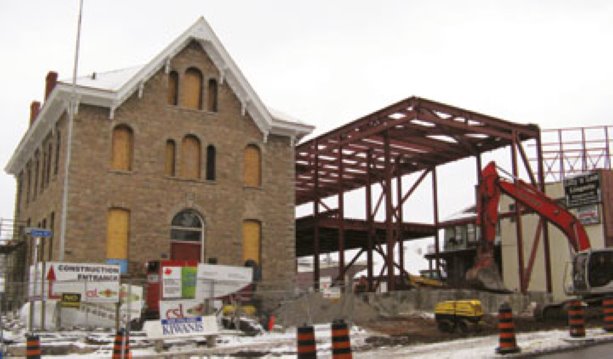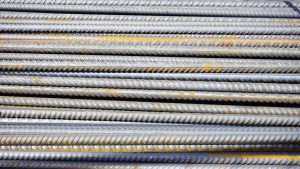As the bi-centennial of the War of 1812 draws closer, Niagara Falls, Ont.-based Bradshaw Iron Works has kept its nose to the grindstone on twin steel projects designed to enhance Niagara Region tourism.
As the bi-centennial of the War of 1812 draws closer, Niagara Falls, Ont.-based Bradshaw Iron Works has kept its nose to the grindstone on twin steel projects designed to enhance Niagara Region tourism.
The Niagara Falls History Museum, which offers tourists a unique opportunity to learn about the war of 1812, is undergoing upgrades and an expansion that will provide an additional 9,870 square feet, increasing the total area of the museum to more than 18,000 square feet.
The new space will house a visitor centre that will include a War of 1812 exhibition showcasing a nationally-significant collection of artifacts and an 80-seat theatre. The museum is also being made fully accessible. The project is funded by the governments of Canada and Ontario, which are each contributing more than $3.2 million to the project through the Building Canada Fund–Communities Component. The steel portion of the museum contract is valued at about $540,000.
The expansion of the building essentially creates a second freestanding structure on a suspended slab, joined to the old museum by a walkway on the second floor.
“We’re pre-fabricating all of the steel in the shop and delivering it to the site,” says Bradshaw president Jason Bradshaw. “The challenge with the project is that it’s a really tight space with the Niagara Falls City Market on one end.
“If we hadn’t got permission to use part of a parking lot next door for material delivery and setting up the crane, we would have had to fly in the steel by helicopter,” he jokes.
Bradshaw agreed to remove a derelict billboard from the parking site, as part of the deal with the lot owner.
The company began work on the site at the end of November and will be finished erection of structural steel in February.
Old Fort Erie, the site of intense military action in 1814, is likewise constructing a visitor centre as part of a program targeting three historic sites in the Niagara Region, including the Laura Secord Homestead and McFarland House.
The fort’s new visitor centre will include a museum, theatre, archive workspace, public restrooms and storage space. The project will also include recreating the type of earthworks in place when the fort was occupied by the U.S. army and under siege by British and Canadian forces.
The three heritage projects are funded by a grant of up to $8.94 million, shared equally under the Government of Canada’s Infrastructure Stimulus Fund and a Government of Ontario budget allocation. The bulk of the money — about $7 million—has been allocated to Old Fort Erie. The steel portion of the Fort Erie contract is valued at about $580,000.
“The building is designed to look like an old army barracks,” says Bradshaw. “It’s a basic steel-framed structure with pre-finished metal cladding on the roof.
Bradshaw says that there was some interest in seeing what the excavation for the building might uncover on the historically rich land. At least 500 soldiers on both sides were killed during the siege of Fort Erie and military artifacts remain imbedded in the soil.
“I believe they were thinking they might find some bones,” says Bradshaw. “But to my knowledge they didn’t find anything. I resisted the urge to throw a couple of bones in myself.”
The historic fort expansion actually mirrors a similar project, when the site was rebuilt during the late 1930s as a Depression-era stimulus project funded by provincial and federal governments.
The new visitor centre replaces a smaller building constructed under that program.
The general contractor on both projects is Collaborative Structures Inc., of Cambridge, Ont. While the projects are scheduled to be finished before summer, deadlines for both are designed to allow for simultaneous Canada Day events in 2011.
The twin projects are keeping Bradshaw’s fabrication and construction crew busy, with a third project, the $18-million St. Catharines Aquatic Centre and Library, rounding out the work schedule.
“We’re putting in about 200 tons of steel, divided equally between the two historic projects,” says Bradshaw. “A ton for every year of the bicentennial.”











Recent Comments
comments for this post are closed